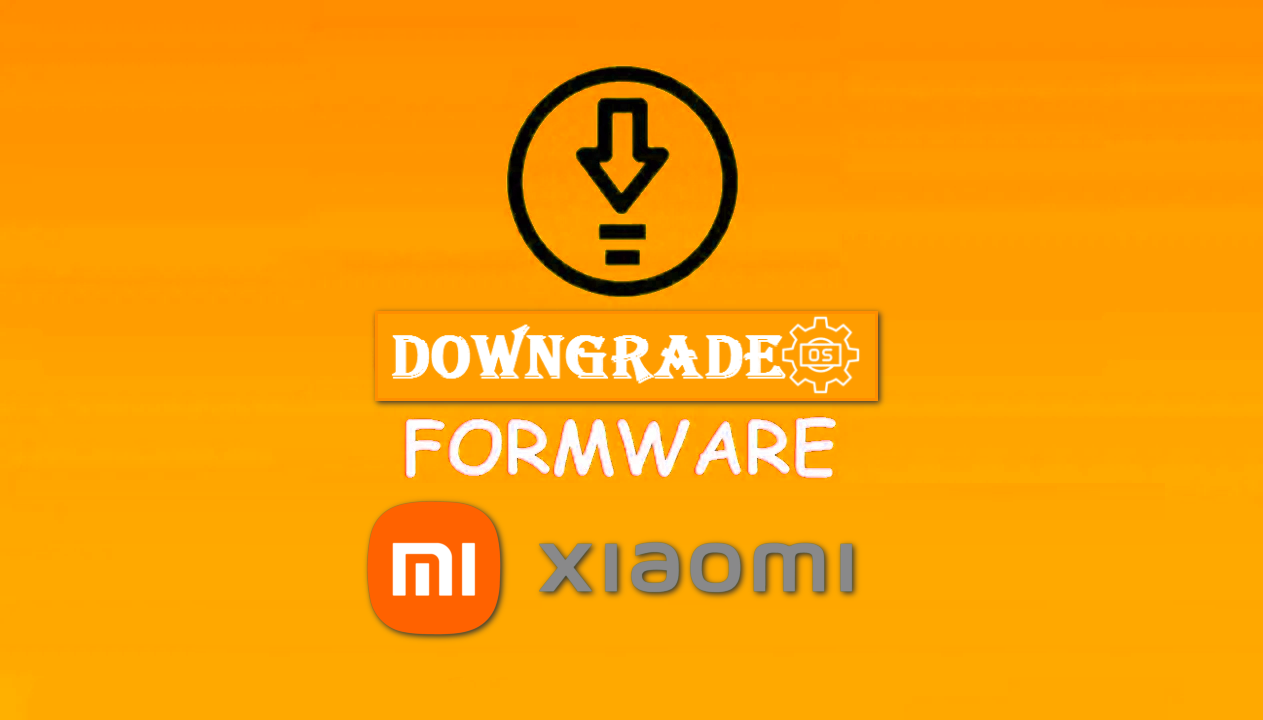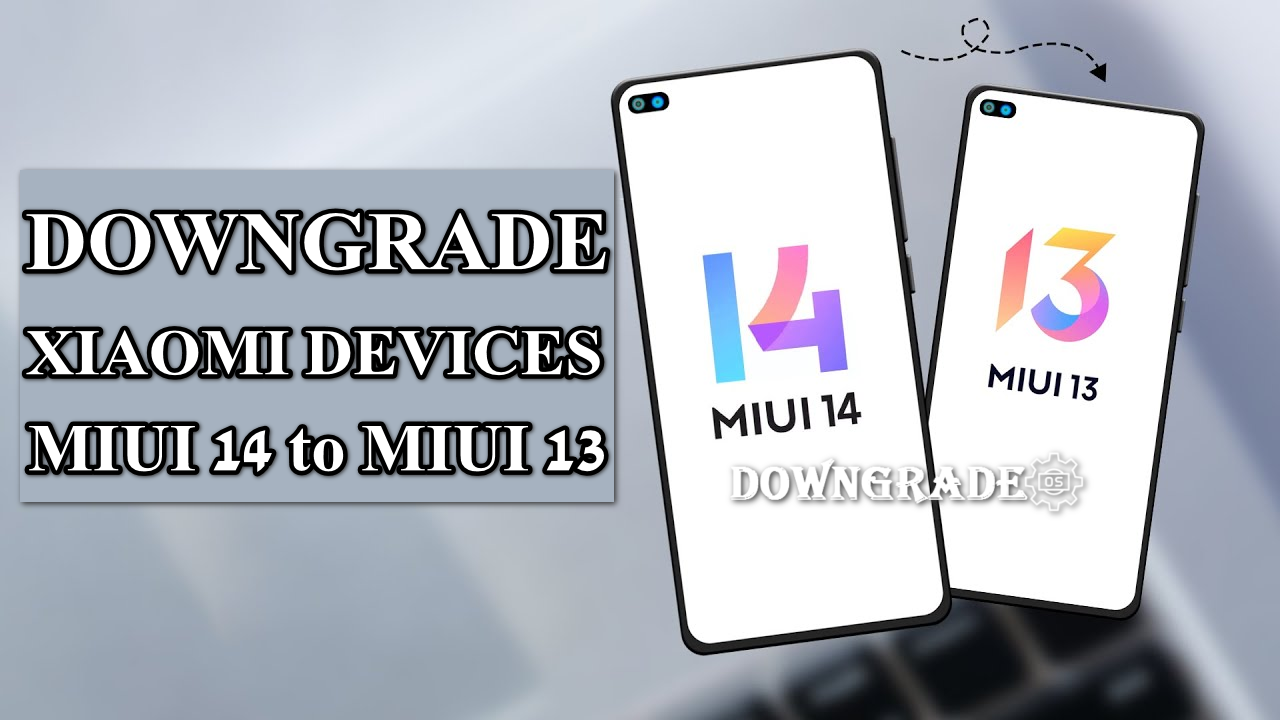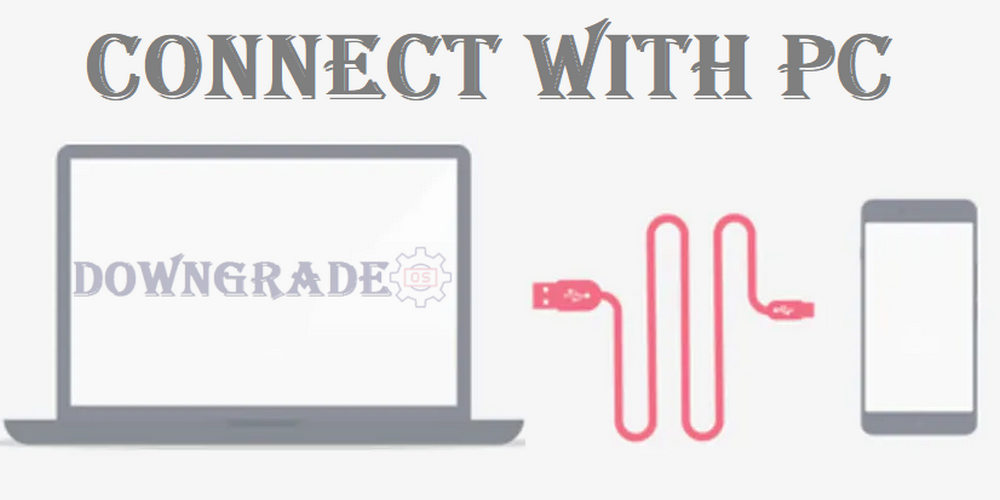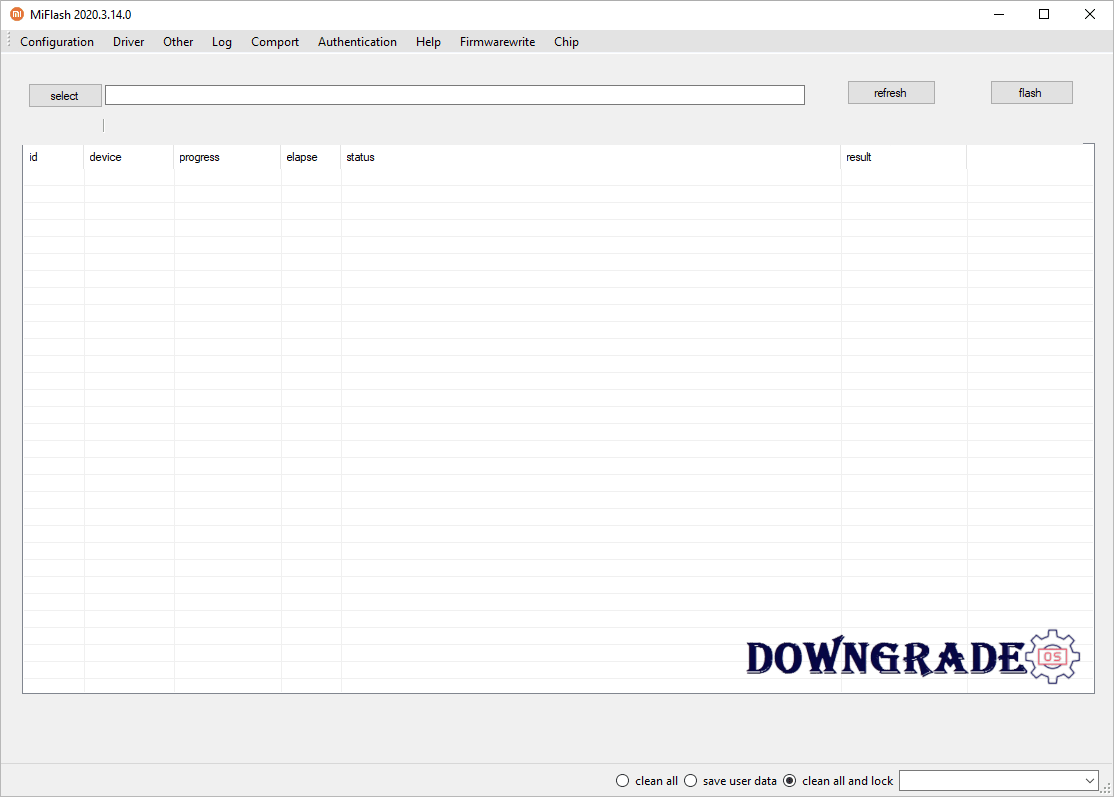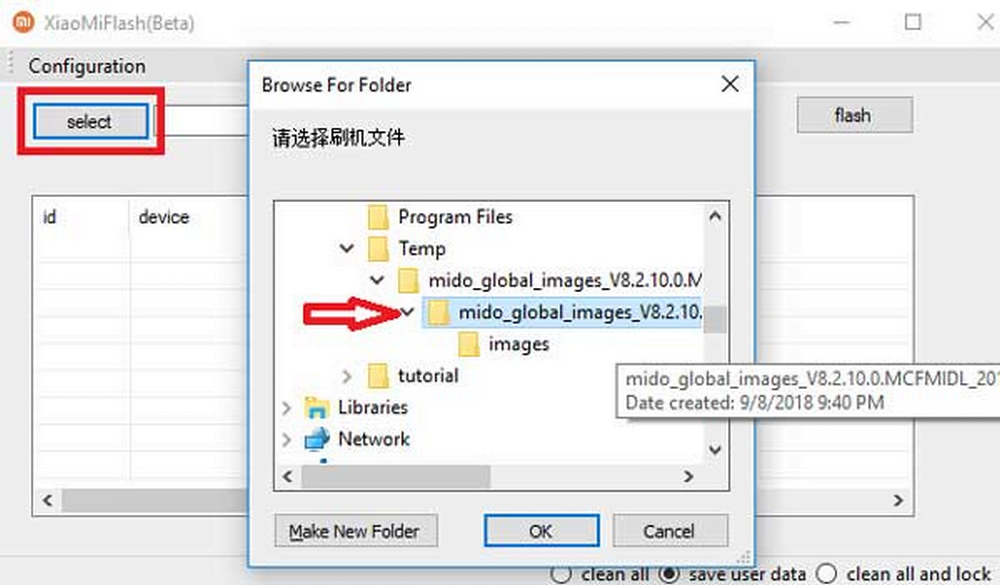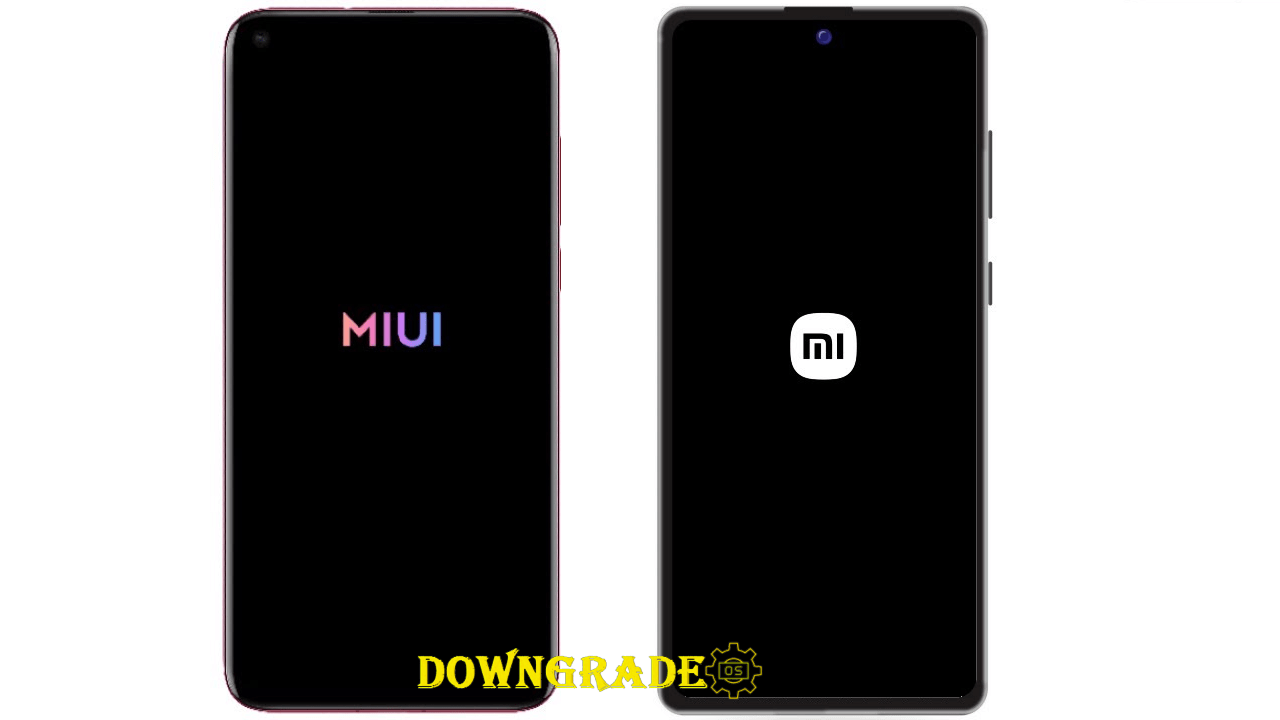Every year, Xiaomi upgrades MIUI, bringing new features and security enhancements to our Xiaomi, Redmi, or Poco, as well as the odd makeover. MIUI (MIUI 14) was released on “January 28th“. Most Xiaomi owners will switch to the new platform immediately, and the majority will undoubtedly enjoy the improvements. But what if you wish to revert to a previous version of MIUI? Is that even conceivable?
Downgrading Android (MIUI 14 to MIUI 13) on a Xiaomi, Redmi, or Poco device using the Mi Flash Tool is a more specific and comprehensive process. The Mi Flash Tool is an official tool provided by Xiaomi to flash the firmware on Xiaomi devices. Follow these steps carefully to downgrade your Xiaomi, Redmi, or Poco device using the Mi Flash Tool:
Also Read: How to Downgrade HyperOS on Xiaomi, Redmi, or Poco
What is MIUI Downgrade or Rollback?
Downgrading MIUI refers to the process of restoring a previous version of the MIUI (Xiaomi’s modified Android-based operating system) on a Xiaomi, Redmi, or POCO smartphone. This may need installing an older version of the MIUI software on the device. Users may opt to downgrade MIUI for a variety of reasons, including:
- Bug Fixes: Newer MIUI updates may introduce bugs or issues that affect the user experience. Downgrading to a previous version can be a way to get a more stable and bug-free experience.
- Compatibility Issues: Newer MIUI versions may not be compatible with certain third-party apps or services. Downgrading could be a workaround to maintain compatibility. Sometimes, newer software updates may introduce compatibility issues with certain apps or hardware components. Downgrading can be a way to resolve these problems.
- Performance Concerns: In some cases, users may find that a newer MIUI software version adversely affects the performance of their device. Downgrading to a previous version that was more stable and efficient may be a solution.
- Preference for Older Features: Newer software updates often come with changes to the user interface and feature set. Some users may prefer the look and functionality of an older version and choose to downgrade to it.
What is Android Downgrade or Rollback?
Android rollback, often known as “downgrading,” refers to the act of restoring an Android smartphone to a previous version of the operating system. This entails replacing the current Android version with an earlier version. The phrase “rollback” refers to reverting to a previous software version.
In the case of smartphones and tablets, such as those manufactured by Samsung, Android rollback often entails loading a previous firmware or software update on the device. This is often done to fix issues that may have emerged following an update to a newer version of Android. The following are some typical reasons for wishing to roll back Android:
- Compatibility Issues: New Android updates can sometimes introduce compatibility problems with certain apps, hardware components, or accessories. Rolling back to a previous version can help avoid these issues.
- Performance: Occasionally, a newer Android version might lead to slower performance or decreased battery life on some devices. Rolling back to a previous version might alleviate these problems.
- Bugs and Glitches: New updates can sometimes come with their own set of bugs and glitches. If these issues are significantly affecting the user experience, some individuals might prefer to revert to a more stable previous version.
- User Preference: Users might have personal preferences for an older Android version due to its user interface, features, or other aspects. In such cases, they might choose to roll back to that version.
- Security Concerns: While it’s generally recommended to stay on the latest Android version for security reasons, some users might want to roll back to a version that they perceive as more secure if they believe that the newer version has vulnerabilities.
MIUI 14 Compatible Devices
The following Xiaomi, Redmi, and POCO devices are currently eligible for the MIUI 14 update:
MIUI 14 Compatible Xiaomi Devices
- Xiaomi 13 Pro
- Xiaomi 12 Pro
- Mi 11 Ultra
- Mi 11X Pro
- Mi 11T Pro
- Mi 11x
- Xiaomi 11 Lite 5G NE
- Xiaomi 11i
- Xiaomi 11i HyperCharge
- Xiaomi Pad 5
- Mi 10
- Mi 10i
- Mi 10T
- Mi 10T Pro
MIUI 14 Compatible Redmi Devices
- Redmi Note 12 Pro+ 5G
- Redmi Note 12 Pro 5G
- Redmi K50i 5G
- Redmi Note 12 5G
- Redmi Note 11 Pro
- Redmi Note 11 Pro Max
- Redmi Note 11
- Redmi Note 11S
- Redmi Note 11 Pro 5G
- Redmi Note 11T 5G
- Redmi Note 10 5G
- Redmi Note 10
- Redmi Note 10S
- Redmi 10 Prime 2022
- Redmi 10 Prime
- Redmi 10
- Redmi Pad
MIUI 14 Compatible POCO Devices
- POCO F4 5G
- POCO X3 Pro
- POCO M5
- POCO M4 5G
- POCO C55
- POCO M4 Pro
- POCO X4 Pro 5G
- POCO M4 Pro 5G
In addition to the aforementioned gadgets, Xiaomi, Redmi, and POCO plan to progressively add additional devices to the list as soon as the software builds for the particular handsets are complete.
Also Read: How to Downgrade MIUI 13 to MIUI 12 on Xiaomi, Redmi, or Poco
How to Rollback MIUI 14 Update on Xiaomi, Redmi, or Poco?
This laptop process is preferred for the downgrade versions of MIUI. For example, if you want to downgrade from MIUI 14 to MIUI 13, or Android 13 to Android 12 this is for you. Follow the steps given below to do so:
Prerequisites:
- First Backup your data.
- Then Unlock the bootloader.
- Download the Xiaomi Mi Flash Tool.
- Download MIUI 13 Downgrade Fastboot ROM for your Xiaomi, Redmi, or Poco device.
| Official Website: | Download Links: |
| Xiaomi Firmware Updater | Download |
| MiFirmware | Download |
Here’s a step-by-step detailed guide: How to Downgrade Xiaomi, Redmi, or Poco (MIUI) Update?
Downgrading Process:
To flash a downgrade Fastboot ROM on a Xiaomi, Redmi, or Poco device:
- First, enable “Developer Options” and “USB Debugging” on your phone.
- Boot the phone into “Fastboot” mode.
- Connect your phone to the computer via USB.
- Launch “Mi Flash Tool” on your computer.
- Download and Extract the Xiaomi, Redmi, or Poco Firmware/Fastboot ROM with 7zip or Winrar.
- Select the Fastboot ROM file.
- Choose the flashing mode (e.g., “Clean all” or “Clean all and lock“).
- Start the flashing process in Mi Flash Tool.
- Wait for the process to complete and see the “Success” green message.
- Reboot your Xiaomi phone.
Congratulations on successfully flashing your Xiaomi phone! Close the Xiaomi Flash Tool and disconnect the device from the computer.
So, we went over the specifics of “How to Downgrade Xiaomi, Redmi, or Poco Android (MIUI 14) Update?” This may appear difficult, but it is simple since we are following a clear tutorial. If you give it a shot, please let us know what you think!
Conclusion
In conclusion, there are some meticulously carried out processes involved in downgrading Android on Xiaomi devices, especially when utilizing the Mi Flash Tool. It’s important to continue cautiously since there is a chance that this method can void your warranty, cause data loss, and cause compatibility difficulties.
Make sure the bootloader on your Xiaomi device is unlocked before proceeding, as downgrading frequently necessitates this action. Additionally, before starting the procedure, make sure you have a backup of all important data.
An authorized method for flashing firmware on Xiaomi smartphones is offered via the Mi Flash Tool. Users may successfully downgrade their Xiaomi devices to a certain MIUI ROM version by following a step-by-step procedure.
If you wanna learn more about my best downgrading OS (Operating System) content tips & tricks so that I can help you create content on DowngradeOS.com every day, check out my recent posts on our “Facebook” or “Twitter” and follow our social network accounts.

